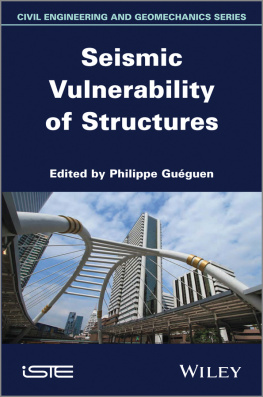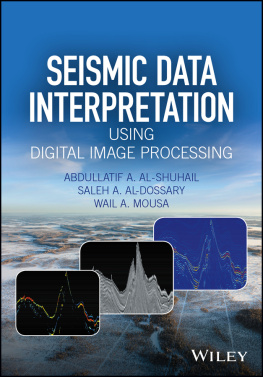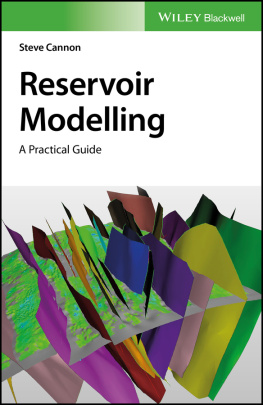This edition first published 2011, 2011 by William Ashcroft
Blackwell Publishing was acquired by John Wiley & Sons in February 2007. Blackwell's publishing program has been merged with Wiley's global
Scientific, Technical and Medical business to form Wiley-Blackwell.
Registered office: John Wiley & Sons Ltd, The Atrium, Southern Gate, Chichester, West Sussex, PO19 8SQ, UK
Editorial offices: 9600 Garsington Road, Oxford, OX4 2DQ, UK
The Atrium, Southern Gate, Chichester, West Sussex, PO19 8SQ, UK
111 River Street, Hoboken, NJ 07030-5774, USA
For details of our global editorial offices, for customer services and for information about how to apply for permission to reuse the copyright material in this book please see our website at www.wiley.com/wiley-blackwell
The right of the author to be identified as the author of this work has been asserted in accordance with the Copyright, Designs and Patents Act 1988.
All rights reserved. No part of this publication may be reproduced, stored in a retrieval system, or transmitted, in any form or by any means, electronic, mechanical, photocopying, recording or otherwise, except as permitted by the UK Copyright, Designs and Patents Act 1988, without the prior permission of the publisher.
Wiley also publishes its books in a variety of electronic formats. Some content that appears in print may not be available in electronic books.
Designations used by companies to distinguish their products are often claimed as trademarks. All brand names and product names used in this book are trade names, service marks, trademarks or registered trademarks of their respective owners. The publisher is not associated with any product or vendor mentioned in this book. This publication is designed to provide accurate and authoritative information in regard to the subject matter covered. It is sold on the understanding that the publisher is not engaged in rendering professional services. If professional advice or other expert assistance is required, the services of a competent professional should be sought.
Library of Congress Cataloguing-in-Publication Data
Ashcroft, W. A. (William A.)
A petroleum geologist's guide to seismic reflection / William Ashcroft.
p. cm.
Includes index.
ISBN 978-1-4443-3262-9 (cloth) ISBN 978-1-4443-3263-6 (pbk.)
1. Seismic reflection method. 2. PetroleumProspecting. I. Title. II. Title: Guide to seismic reflection.
TN269.84.A84 2011
622'.1828dc22
2010048040
A catalogue record for this book is available from the British Library.
This book is published in the following electronic formats: ePDF [ISBN: 9781444397857]; ePub [ISBN: 9781444397864]
Preface
This book is written for anyone who wants to get quickly up to speed on some aspect of reflection seismology as it affects the seismic interpreter. It is a development of course notes on seismic reflection interpretation which have been given to students on the MSc course in Petroleum Geology at Aberdeen University over many years, and thus it takes the form of a course manual rather than a systematic textbook. It can be used as a self-contained course for individual study or as the basis of a class programme. The notes were originally provided to make the subject more accessible to geology students, but this volume should also prove useful to others, such as petroleum engineers, who have to work in an integrated exploration or development team side by side with geophysicists and geologists. Much petroleum exploration and production is now driven by the seismic reflection survey technique, so that all team members need to know quite a lot about it.
Throughout this book, the way in which the subject matter is treated depends on its importance to the seismic interpreter. For example, in discussing data acquisition in the field, only the barest descriptions of seismic source and receiver hardware are given; the focus is on the geometry of survey layout and the maintenance of signal quality.
Geophysics uses the language of mathematics, which is like any other language if you don't use it every day you soon forget it, so many people find the mathematics in geophysics a barrier to learning. The first rule for reading a maths-based topic might be summarized as don't panic! The second rule is to keep re-reading the bits you don't understand, with pencil and paper handy. The third rule is to read only twice over at any one time, then move on to rest your conscious brain and give its unconscious part time to work around it. That often works best while doing a practical tutorial of some sort maybe something as simple as plotting a graph. Let your fingers help the learning!
The book is written with an eye to those points that students of the subject tend to find difficult, and it tries to provide insight through tutorial material of a practical nature. The tutorials aim to reinforce and deepen understanding of key topics and to provide the reader with a measure of feedback on progress. Some tutorials may only involve drawing simple diagrams, but many are computer-aided tutorials with graphics output to give insight into key steps in seismic data processing, or into the seismic response of some common geological scenarios. Other tutorials involve interpretation of seismic sections and associated well data. The reader is urged to complete the practical tutorials at the time they are encountered in the text. The main interpretation tutorials at the end of Chapter 7 can be done over a longer schedule.
There are two separate applications of the seismic reflection technique in the petroleum industry. The first is to determine subsurface geological structure as exactly as possible, by calculating the depth to key geological horizons and so delineate closed, possibly hydrocarbon-bearing structures and calculate their volume. The second application is to use seismic characteristics such as signal amplitude or frequency to determine subsurface properties such as porosity, or the presence of hydrocarbons in a reservoir rock, and to track variations in such properties away from well control.
Part I of this book covers fundamental topics such as data acquisition and the description of the seismic wavelet, together with structural interpretation from two-dimensional seismic sections. Part II deals with three-dimensional surveys and the seismic input to reservoir studies.
Dr. William Ashcroft,
Aboyne,
Royal Deeside,
Scotland
Acknowledgements
I am grateful for helpful comments on drafts of this work from Alan McGregor, Peter McAllister-Hall, Henry Allen, Stephen Spencer and Adrian Burrows.
Professor Jonathan Redfern, University of Manchester, helped the author to maintain focus on seismic facies. Seismic data for interpretation purposes was generously provided by WesternGeco and BP.
The open policy of the Society of Exploration Geophysicists towards the use of illustrative material from their publications has been a big help in preparing the work, and the ready contribution of similar material from the European Association of Geoscientists and Engineers, the Geological Society, the American Association of Petroleum Geologists and the Canadian Society of Exploration Geophysicists is gratefully acknowledged.
Part I
Basic Topics and 2D Interpretation
Chapter 1
Introduction and Overview
We should all be able to squint along seismic sections and grunt knowingly.
(Anstey, 1982)
1.1 Exploration Geophysics in Petroleum Exploration
Four geophysical survey techniques are commonly used in the exploration for petroleum: gravity surveys, aeromagnetic surveys, electromagnetic surveys and seismic surveys.








